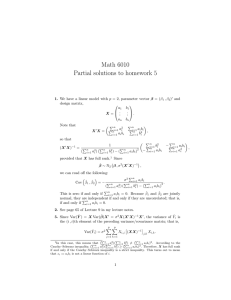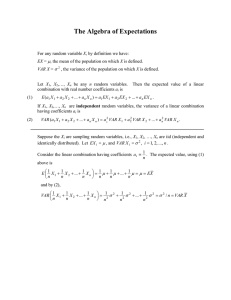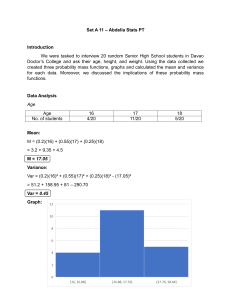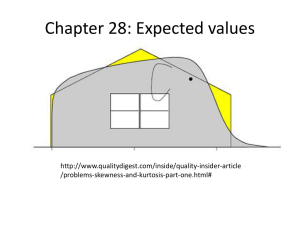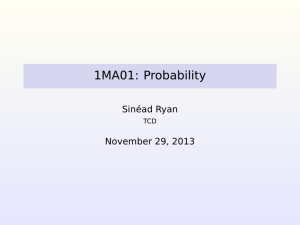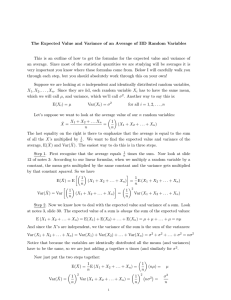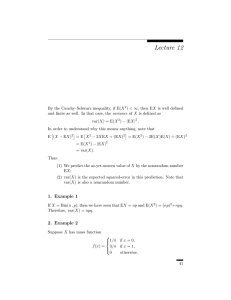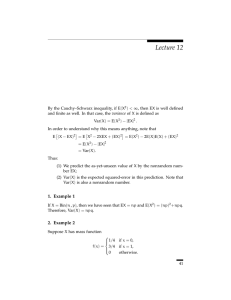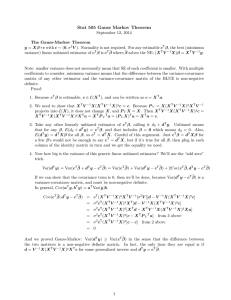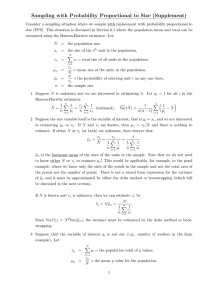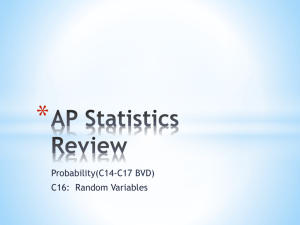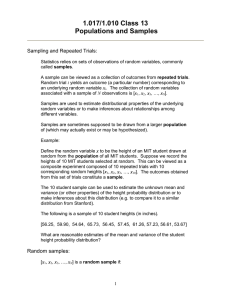Let X1, X2, , Xn be a random sample of size n from a distribution
advertisement
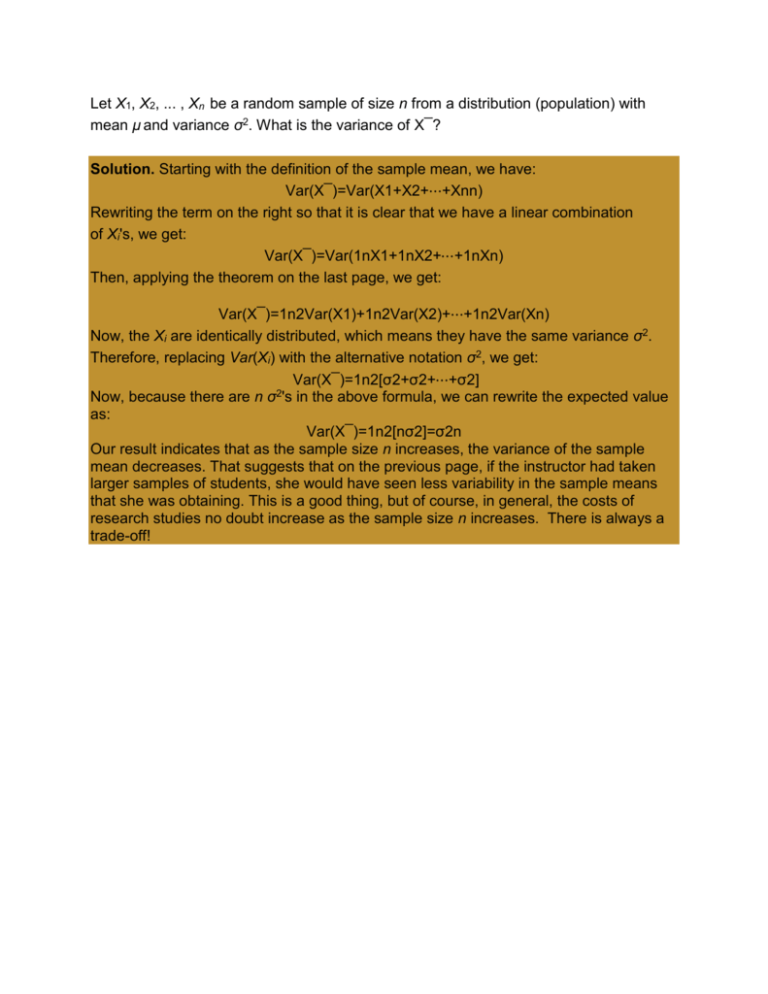
Let X1, X2, ... , Xn be a random sample of size n from a distribution (population) with mean μ and variance σ2. What is the variance of X¯? Solution. Starting with the definition of the sample mean, we have: Var(X¯)=Var(X1+X2+⋯+Xnn) Rewriting the term on the right so that it is clear that we have a linear combination of Xi's, we get: Var(X¯)=Var(1nX1+1nX2+⋯+1nXn) Then, applying the theorem on the last page, we get: Var(X¯)=1n2Var(X1)+1n2Var(X2)+⋯+1n2Var(Xn) Now, the Xi are identically distributed, which means they have the same variance σ2. Therefore, replacing Var(Xi) with the alternative notation σ2, we get: Var(X¯)=1n2[σ2+σ2+⋯+σ2] 2 Now, because there are n σ 's in the above formula, we can rewrite the expected value as: Var(X¯)=1n2[nσ2]=σ2n Our result indicates that as the sample size n increases, the variance of the sample mean decreases. That suggests that on the previous page, if the instructor had taken larger samples of students, she would have seen less variability in the sample means that she was obtaining. This is a good thing, but of course, in general, the costs of research studies no doubt increase as the sample size n increases. There is always a trade-off!




